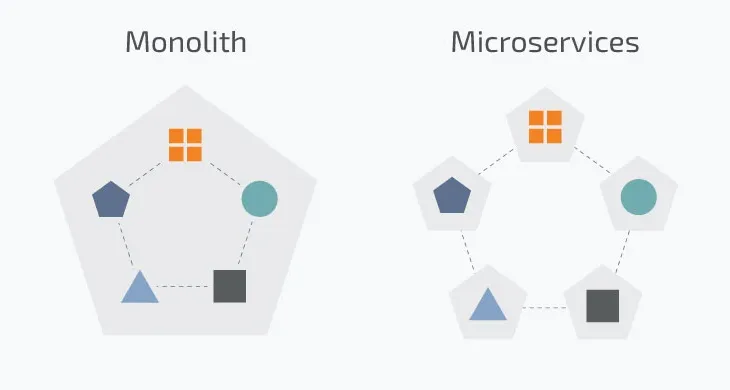
In today’s fast-paced and evolving technological landscape, the traditional monolithic architecture often falls short in meeting the demands of scalability, flexibility, and rapid development. Enter microservices, a revolutionary approach that enables organizations to break down their monolithic applications into smaller, independent services. In this blog post, we will explore the benefits and challenges of migrating from a monolith to microservices and provide a step-by-step guide to help you navigate this transformative journey.
Understanding the Microservices Architecture
Before diving into the migration process, it is crucial to grasp the fundamentals of microservices architecture. Unlike monolithic applications, microservices consist of loosely coupled, independently deployable services that communicate through lightweight protocols such as HTTP or messaging systems. Each microservice is responsible for a specific business capability, enabling teams to develop, deploy, and scale services independently.
Identifying the Right Candidates
Not all applications are suitable for the microservices approach. It’s essential to conduct a thorough analysis of your monolith to identify potential candidates for separation. Look for areas of the application that exhibit high coupling, complex dependencies, or require frequent changes. These components are ideal candidates for microservice extraction, as they can benefit from the increased agility and isolation offered by the architecture.
Define Service Boundaries
Once you’ve identified the components to be extracted, the next step is to define clear service boundaries. Analyze the interactions and dependencies between different modules in your monolith, and group them based on business functionalities. Each group will become a separate microservice, encapsulating a specific domain of your application. Properly defining these boundaries ensures that each microservice has a clear responsibility and reduces the likelihood of future conflicts.
Establish Communication Channels
Microservices rely heavily on inter-service communication for collaboration. Determine the most suitable communication mechanisms for your system. RESTful APIs, message queues, or event-driven architectures are popular choices. Pay close attention to data consistency, synchronization, and handling failure scenarios when designing communication patterns between microservices.
Data Management and Persistence
In a monolithic application, data is often stored in a single database. When transitioning to microservices, it’s crucial to address data management and persistence. Consider different strategies such as database-per-service or shared database approaches, based on your requirements. Implementing distributed data management techniques, including event sourcing and CQRS (Command Query Responsibility Segregation), can help ensure data consistency and autonomy for each microservice.
Decentralized Governance and Deployment
With microservices, teams gain more autonomy and can independently develop, deploy, and scale their services. Establish a decentralized governance model that empowers individual teams to make technology choices, select appropriate programming languages, and adopt the tools best suited to their microservice’s requirements. Encourage the use of containerization and orchestration technologies like Docker and Kubernetes to simplify deployment and ensure scalability.
Testing and Monitoring
Effective testing and monitoring strategies are crucial for maintaining the health and reliability of your microservices ecosystem. Implement comprehensive unit tests, integration tests, and end-to-end tests for each microservice. Adopt logging, distributed tracing, and monitoring solutions to gain insights into the behavior and performance of your services. Automated monitoring and alerting mechanisms will help you proactively identify and address issues.
Conclusion
Migrating from a monolithic architecture to microservices is a transformative journey that requires careful planning, analysis, and a shift in mindset. By embracing microservices, organizations can achieve enhanced scalability, flexibility, and accelerated development cycles. However, it’s important to remember that microservices come with their own set of challenges, such as increased complexity in distributed systems and managing inter-service communication. With the right strategy, well-defined boundaries, and a focus on
